Embryology: Definition, Steps, Types and Examples
Embryology is the branch of biology that studies the development of embryos. It explains the early stages of development. Embryo development begins from fertilization to birth. It examines how a single-cell zygote transforms into a complex organism through various stages of cell division. Human embryology studies human embryo growth. Human reproduction starts with fertilisation and forms a zygote.
This Story also Contains
- What is Embryology?
- What is Embryogenesis?
- Fertilisation
- Cleavage and Blastulation
- Human Development
- Stages of Pregnancy
- Recommended Video for Embryology
- MCQs on Embryology
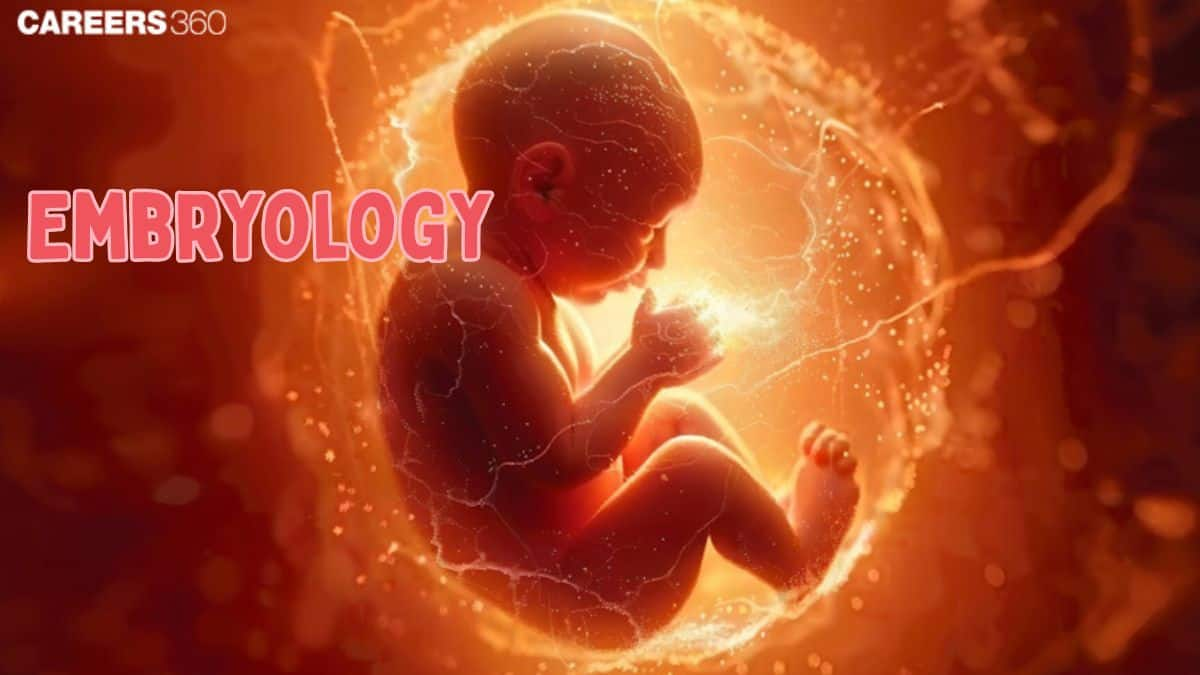
Embryology helps understand life’s beginning. It shows how organs are developed through organogenesis. The stages of the embryo show body formation. This field provides insights into the similarities between species, supporting evidence for Embryo Development. In this article, embryology, embryogenesis, fertilisation, cleavage and blastulation, human development, and stages of pregnancy are discussed. Embryology is a topic in the chapter Evolution in Biology.
What is Embryology?
Embryology is the branch of science that explains how life begins and grows after fertilization in humans and implantation. It shows how a single fertilised egg develops into a complex organism consisting of trillions of cells, each specialised to perform programmed functions.
The process, in general, has fascinated scientists and other medical professionals. At the same time, it has changed countless lives in the form of advancements in health care, reproduction, prenatal care, and developmental biology.
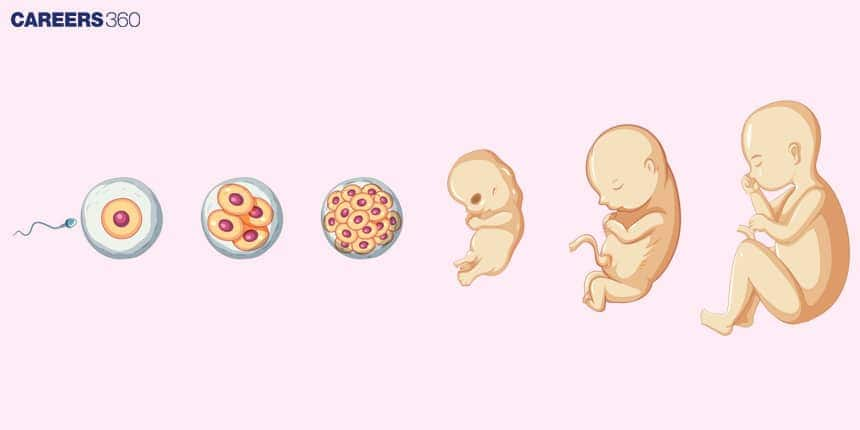
What is Embryogenesis?
Embryogenesis is the process where a zygote (fertilised egg) develops into a complete embryo. It undergoes several cell divisions, growth, and differentiation to develop into a fully formed embryo.
This complex process consists of many stages of development, namely cleavage, blastulation, gastrulation, and organogenesis, to finally form tissues, organs, and structures of the body that are necessary to sustain life. Embryogenesis is essential for the correct development and establishment of the overall plan of an organism's body.
Fertilisation
Fertilisation is the process of union of structure of sperm and egg structures. It initiates embryonic development to form a zygote. It involves the fusion of genetic material from both gametes. This results in a diploid zygote that has the complete set of chromosomes (one set from each parent).
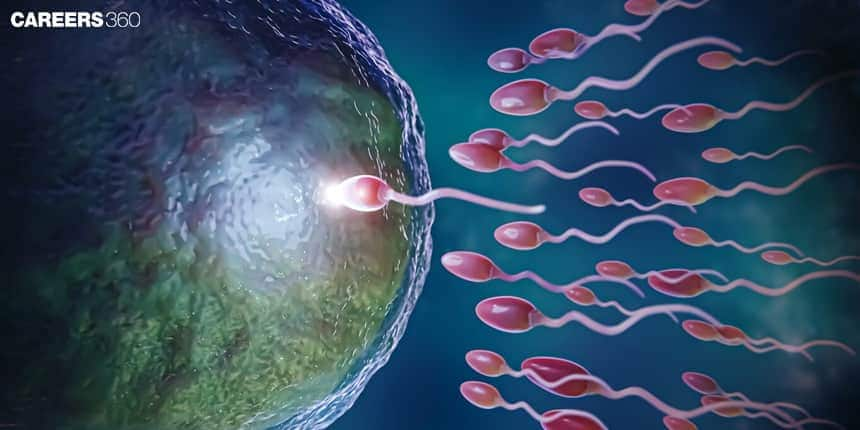
Significance of Fertilisation
Fertilisation restores the diploid number of chromosomes It starts embryonic development. It is the first step in forming a new life. Fertilisation ensures genetic variation and proper growth of the embryo.
Cleavage and Blastulation
Cleavage is the first stage after fertilization. It involves a series of rapid cell divisions. During cleavage, the zygote divides into many smaller cells called blastomeres. There is no increase in total size. Only the number of cells increases, not the size. Cleavage can be of two types:
Holoblastic cleavage – complete division of the egg
Meroblastic cleavage – partial division of the egg
Cleavage sets the base for the blastulation stage.
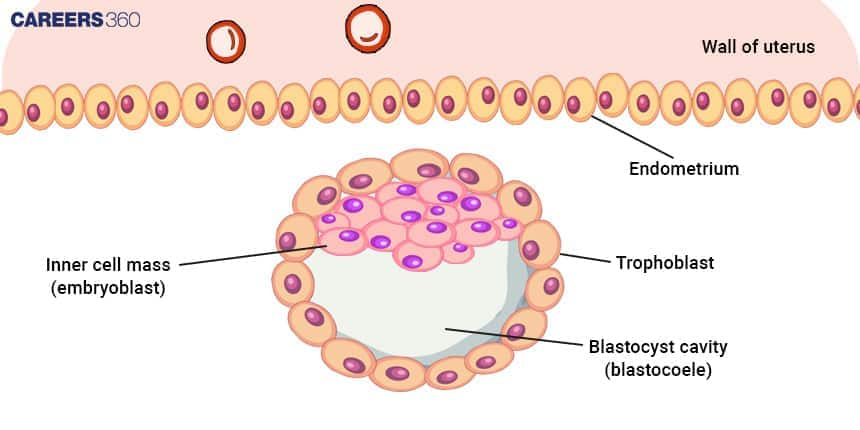
Formation of the Blastula
After cleavage, the embryo becomes a blastula—a hollow ball of cells. It is filled with the cavity fluid called the blastocoel (Blastocyst cavity) . This phase of development follows cleavage immediately; therefore, according to order, it is the next stage of development in a developing organism. It is very essential since it lays the foundation for gastrulation upon it sit all future developmental events.
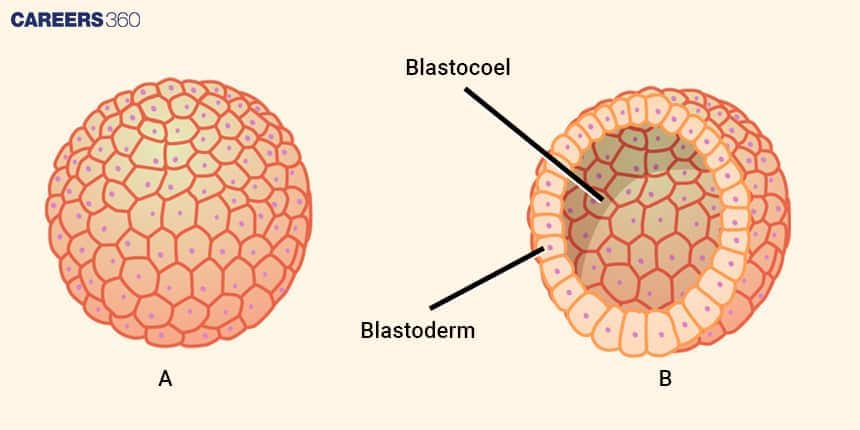
Gastrulation
Gastrulation is the next key stage of embryogenesis. The blastula transforms into a gastrula, a structure with multiple layers. Cell movement and differentiation occur in this phase. The fate of germ layers are formed:
Ectoderm (forms skin, nervous system)
Mesoderm (forms muscles, bones, blood)
Endoderm (forms gut, liver, lungs)
Gastrulation sets the foundation for organogenesis and complete body formation.
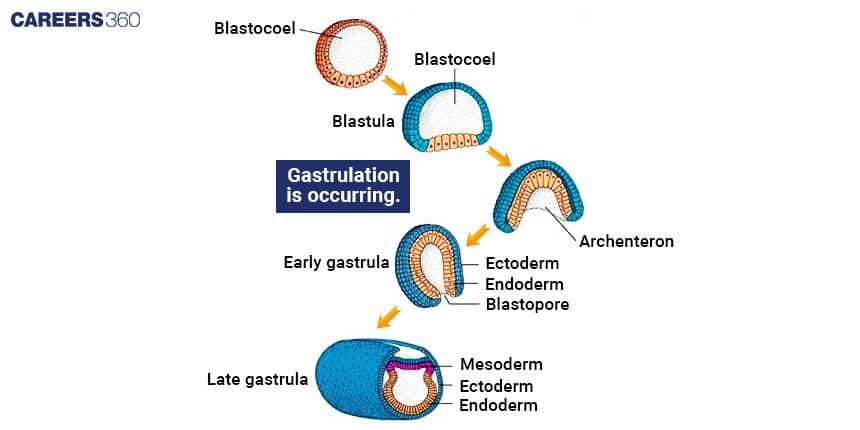
Human Development
Human development starts with fertilization. A zygote forms after sperm meets egg. The zygote divides to form a blastocyst. It implants in the uterus and grows. Gastrulation and organ formation follow. The process ends with childbirth.
Fertilisation: The union of sperm and ovum forms a zygote.
Cleavage: Rapid mitotic divisions increase cell number.
Blastulation: Formation of a hollow blastocyst.
Implantation: The blastocyst attaches to the uterine wall.
Gastrulation: Formation of three germ layers.
Organogenesis: Formation of organs from germ layers.
Growth and differentiation: Tissues mature and specialize.
Parturition: The baby is delivered at the end of pregnancy.
Stages of Pregnancy
Human development begins with fertilization. A single zygote forms and starts dividing. Each week brings important changes. Organs, limbs, and systems start developing. Tracking stages helps monitor fetal health. This timeline shows growth from week 3 to 8.
Weeks after Fertilisation | Embryonic Development |
Week 3 | Formation of three germ layers neural tube and notochord start forming. |
Week 4 | Heart starts beating, arm buds and eye pits are visible. |
Week 5 | Size ~ 4 mm and embryo development becomes C-shaped inner ear and pharyngeal arches form liver, pancreas, spleen, and gall bladder. |
Week 6 | Size ~ 8 mm. The eyes and nose form and leg buds and hand paddles appear. The stomach and kidneys start developing. |
Week 7 | Size ~ 13 mm. The respiratory system, lymphatic system, and sex organs start developing; arms and legs grow, and fingers and toes appear. |
Week 8 | Size ~ 20 mm. The external ears, nipples, and hair follicles start developing, and most organs are formed. |
Recommended Video for Embryology
MCQs on Embryology
Q1. Ontogeny repeats phylogeny was stated by
S.Fox
A.Wallace
C.Darwin
E.Haeckel
Correct answer: 4) E. Haeckel
Explanation:
Ernst Haeckel proposed the biogenetic law, which states that "ontogeny repeats phylogeny." This means that the development of an organism (ontogeny) reflects the evolutionary history of its species. Regardless, this concept is not entirely accurate, as modern evolutionary biology recognizes that embryonic stages are influenced by both ancestral traits and adaptations to current developmental needs.
Hence, the correct answer is option 4) E. Haeckel.
Q2. In the following questions, a statement of assertion (A) is followed by a statement of reason (R)
(A) If both Assertion & Reason are true and the reason is the correct explanation of the assertion, then mark A
(B) If both Assertion & Reason are true but the reason is not the correct explanation of the assertion, then mark B
(C) If Assertion is true statement but Reason is false, then mark C
(D) If both Assertion and Reason are false statements, then mark D
Assertion: Even though two animal species' adults may not resemble one another very much, their embryos often do.
Reason: For instance, young chicks and young rabbits are nearly indistinguishable from one another, yet adults may be easily told apart.
A
B
C
D
Correct answer: 1) A
Explanation:
Studying an individual plant or animal's developmental history provides strong support for the hypothesis of evolution. Every organism replicates the evolutionary history of its predecessors during the course of its own development. Even though two animal species' adults may not resemble one another very much, their embryos often do. For instance, young chicks and young rabbits are nearly indistinguishable from one another, yet adults may be easily told apart.
Hence, the correct answer is Option 1) A.
Q3. Which of the following statements are correct?
Statement 1: Unborn or unhatched organisms that are in the early stages of development are called embryos.
Statement 2: The growth and development of embryos happens in stages. The physical characteristics of an embryo change during its growth. Some features become more focused. Some features vanish.
Statement 3: In general, the early stages of development in related species' embryos share more characteristics than the later stages.
Statement 4: There may be similarities between the embryos of different species that are not apparent when the organisms are completely developed. Numerous of these resemblances are homologous traits. These characteristics demonstrate the species' evolutionary relationships.
Statements 1 and 2 are correct but statements 3 and 4 are incorrect.
Statements 1 and 3 are correct but statements 2 and 4are incorrect.
Statements 1, 2 and 3 are correct but statement 4 is incorrect.
All the statements 1,2,3 and 4 are correct.
Correct answer: 4) All the statements 1,2,3 and 4 are correct.
Explanation:
Unborn or unhatched organisms that are in the early stages of development are called embryos. The growth and development of embryos happen in stages. The physical characteristics of an embryo change during its growth. Some features become more focused. Some features vanish. There may be similarities between the embryos of different species that are not apparent when the organisms are completely developed. Numerous of these resemblances are homologous traits. These characteristics demonstrate the species' evolutionary relationships. For instance, pharyngeal arches, also known as gill arches, are homologous features found in all embryos. These arches grow into gill-related structures in fish. These arches grow into the components of the ears and mouth in animals. Typically, at earlier stages of development, related species' embryos share more characteristics than they do at later stages.
Hence the correct answer is option 4) All the statements 1,2,3 and 4 are correct.
Also Read:
Frequently Asked Questions (FAQs)
Techniques in use within the present-day science of embryology also encompass in vitro fertilisation techniques, genetic manipulation, and new imaging systems, which have been changing the sciences of research on reproductive medicine and the study of developmental biology.
Numerous birth defects include spina bifida and Congenital Heart Defects. The reason can either be Genetic or Environmental. Thus, it has given better management for these conditions.
Fertilisation is when a sperm unites with an egg and gives rise to a zygote. This restores the diploid number of chromosomes and initiates embryonic development that eventually gives rise to a new organism.
Gastrulation forms a gastrula, which has three embryonic germ layers—endoderm, mesoderm, and ectoderm. These germ layers then differentiate themselves to form all the tissues and organs of the organism's body.
Key landmarks of the three trimesters of human fetal development include organogenesis, periods of extraordinary growth, and ground preparation for live birth. Diagrams represent intricate rounds of embryonic development.